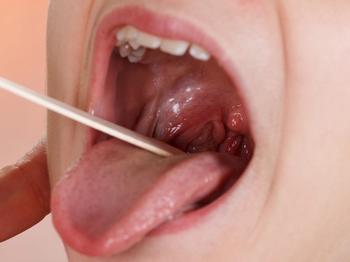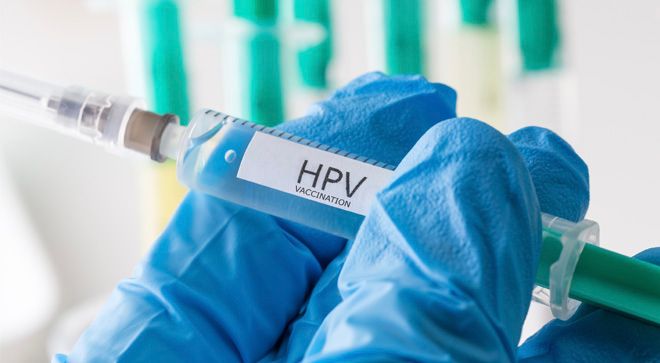
Head & Neck Cancer
Latest News
Latest Videos
More News

After being diagnosed with a rare cancer, I met some amazing people and have a new appreciation for life.

How do survivors of head and neck cancer cope with drastic changes to one of the most visibly identifiable body parts — the head?

When I sit down with my paint brush, despite my cancer history, I don’t feel different anymore.

The Food and Drug Administration agreed to speed up the review of avasopasem to treat severe oral mucositis in patients with head and neck cancer.

Patients who are looking to quit smoking to better their survival and health outcomes should talk to their health care team about different methods to do so, an expert said.

Opdivo — even when given in a low dose — was shown to improve outcomes in patients with advanced head and neck squamous cell carcinoma, highlighting a new option for patients who cannot receive the full dose.

From tennis star Martina Navratilova’s two cancer diagnoses to First Lady Jill Biden undergoing Mohs surgery to have a suspicious lesion removed and musician deaths, here’s what’s happening in the cancer space this week.

A novel three-drug combination bested standard-of-care regimens for patients with human papillomavirus-related cancers, according to phase 2 study results.

From the singer of “Duran Duran” revealing his stage 4 cancer diagnosis — and missing the band’s induction to the Rock & Roll Hall of Fame because of it — to Barry Corbin’s oral cancer fears, here’s what’s happening in the oncology space this week.

NC410 plus Keytruda will be studied in a phase 1b/2 trial for patients with certain solid cancers that either did not respond to or have not been treated with an immunotherapy agent.

The FDA granted a fast track designation to an investigational drug alone and in combination with Keytruda to treat patients with HPV recurrent/metastatic head and neck squamous cell carcinoma.

Compared with surgery, active surveillance was just as effective and lowered anxiety levels in patients with low-risk papillary thyroid cancer.

The novel drug PY159 will be studied as a single agent and in combination with Keytruda for patients with certain solid tumors — including ovarian, pancreatic, lung, head and neck, colorectal and breast cancers.

Years ago, the goal of head and neck cancer treatment was strictly focused on a cure. Now, there has been a slight change in approach to improve survival rates while preserving quality of life.

The addition of Keytruda to chemoradiation, followed by maintenance Keytruda, did not lead to a statistically significant event-free survival benefit in patients with locally advanced head and neck squamous cell carcinoma.

The first patient enrolled onto a phase 1 trial has received TCMB07, an investigational drug, for the treatment of cachexia, a severe disorder that may occur in more than half of patients with advanced-stage cancer.

A clinical trial reviewing the safety and efficacy of a treatment regimen of enoblituzumab in combination with either retifanlimab or tebotelimab in patients with recurrent or metastatic squamous cell carcinoma of the head and neck has been stopped by the manufacturer of the cancer drugs.

Here is a roundup of cancer treatments that were approved by the FDA in the spring of 2022 that patients may have missed.

Although much has changed in the past two decades, more needs to be done to prepare cancer survivors for what happens after their treatments end.

Avasopasem manganese is the first drug that has been shown to reduce the incidence and severity of chemotherapy-related oral mucositis in patients with head and neck cancer, research showed.

The Food and Drug Administration granted a fast track designation to PDS0101 plus Keytruda for the treatment of patients with recurrent or metastatic HPV16-related head and neck cancer.

Head and neck cancer treatments and the subsequent side effects can be overwhelming for patients and their caregivers due to the impact they have on routine activities, writes a speech-language pathologist at Cancer Treatment Center of America Atlanta. However, the expert notes, there are plenty of specialists who can help improve patient quality of life.

The manufacturers of the drug plan to resubmit the request for the FDA to approve the regimen sometime this summer.

After surviving cancer and the many bad days that come with a diagnosis, voice actor Rob Paulsen noted that he had a newfound sense of empathy that helped him out of some of his darkest days.

When lovers of “Pinky and the Brain,” “Teenage Mutant Ninja Turtles” and other cartoons gathered in voice actor Rob Paulsen’s hospital room, he took particular notice of one exuberant woman with cancer who was extroverted and kind, despite not having long to live.









